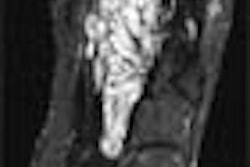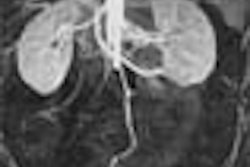Thieme, New York, 2001, $79.
Examination and Diagnosis of Musculoskeletal Disorders has the laudable goal of teaching both the art of physical diagnosis and the appropriate use of imaging techniques to orthopedic surgeons. Such a text could be useful for general radiologists as well.
The book is arranged in nine chapters covering the major peripheral joints, the spine, and the pelvis. Each chapter begins with a section on how to take a patient history and perform a physical exam. The discussions of the physical examination are not organized so as to facilitate rapid reference, although some useful information is given.
The choice of clinical topics varies considerably from one chapter to the next. Some chapters (e.g. the shoulder) concentrate on trauma and sports medicine, while others (e.g. the pelvis) discuss tumors and arthritis at moderate length, but suffer from an overly brief discussion of trauma.
A discussion of imaging findings follows the clinical portion of each chapter. It is unfortunate that the authors have chosen a modality-based approach rather than an integrated approach to diagnosis. They often discuss a single clinical entity in multiple, widely separated places in the same chapter.
Thus, the description of clinical findings might be several pages away from the description of the radiographs, while the CT findings are several pages further on, and MRI findings are elsewhere in the chapter. This approach results in a text that is both fragmented and redundant.
And much of the authors’ advice is out of date. For instance, they state that conventional tomography is preferable to CT scan in evaluating injuries of the Lisfranc joint because CT is in the incorrect plane!
The images are generally of poor quality. Many of them, especially the MRI and ultrasound images, seem to have been selected not to illustrate the most important diagnostic points, but because the images happened to be the ones the authors had on hand. Many of the CT images are vintage.
The bibliography is scant, not current, and unfortunately for an English-speaking audience, weighted towards the German literature.
In summary, this text is too fragmentary and unfocused, and the radiology portion too misleading, for me to recommend the book to either orthopedic surgeons or radiologists.
By Dr. Julia CrimAuntMinnie.com contributing writer
April 30, 2002
Dr. Crim is chief of musculoskeletal radiology and associate professor at the University of Utah in Salt Lake City. She is the author of Imaging of the Foot and Ankle (Lippincott, Williams & Wilkins, Philadelphia, 1996).
If you are interested in reviewing a book, let us know at [email protected].
The opinions expressed in this review are those of the author, and do not necessarily reflect the views of AuntMinnie.com.
Copyright © 2002 AuntMinnie.com



















